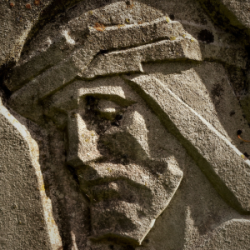Welcome readers! Please subscribe through the buttons on the right.
(Read this series from its beginning here.)

The following interpretation is not my own but found in Ched Myers’ excellent commentary on the gospel of Mark, Binding the Strong Man.
Myers argues that the gospel of Mark uses the characters of Pharisees and teachers of the law not to pit Christians against Jews, but to help us understand classism within the Jesus stories and the conflict between upper classes (the elites) and the lower classes (the marginalized).
In Mark’s version of the Jesus story, Jesus’ society was shaped like a cone, with the Sadducees at the center and top of the cone. Right below them were the Pharisees, competing for power. This society also used faithfulness to the traditions of ritual purity and “cleanliness” to determine who were insiders and who were outsiders, who would be centered in that society and who would be pushed to the margins, and who was at the top of the pyramid and who was at the bottom.
The Sadducees were much more conservative in interpreting which behaviors enabled someone to be pure or “clean.” The Pharisees, by contrast, used a more liberal, “progressive” interpretation of purity standards. This enabled more people from the masses to claim cleanliness and therefore avoid being socially disenfranchised. If we were to look at this anachronistically, the Pharisees could be called the blue-collar, working person’s religious leaders, whereas the Sadducees were the religious leaders of the elite and the wealthy who could afford to live up to the Sadducees’ strict standards and their interpretations of who was pure and in or impure and out.
Myers uses the Pharisees’ and Sadducees’ differing interpretations of Leviticus 11:38 and of eating domesticated, unirrigated grain versus imported grain from Egypt, which was irrigated but also much cheaper and so affordable for those with less means.
“According to Leviticus 11:38 if water is poured upon seed it becomes unclean. The passage, however, does not distinguish between seed planted in the soil and seed detached from the soil . . . In years of poor harvests, a frequent occurrence owing to poor soil, drought, warfare, locust plagues and poor methods of farming, this text was a source of dispute. Why? During such lean years, grain was imported from Egypt. But the Egyptians irrigated their fields (putting water on seed) so that their grain was suspect, perhaps even unclean. The Sadducees judged that such grain was unclean and anyone consuming it also became unclean. They were quite willing to pay skyrocketing prices commanded by scarce domestic grain because they could afford it. . . . One senses economic advance being sanctioned, since the Sadducees were often the large landowners whose crops increased in value during such times. By contrast the Pharisees argued that the Pentateuchal ordinance applied only to seed detached from the soil; therefore . . . one could be observant and still purchase Egyptian grain.” (Ched Myers; Binding the Strong Man: A Political Reading of Mark’s Story of Jesus, p. 76)
We’ll unpack what how this might apply to us today, next.













